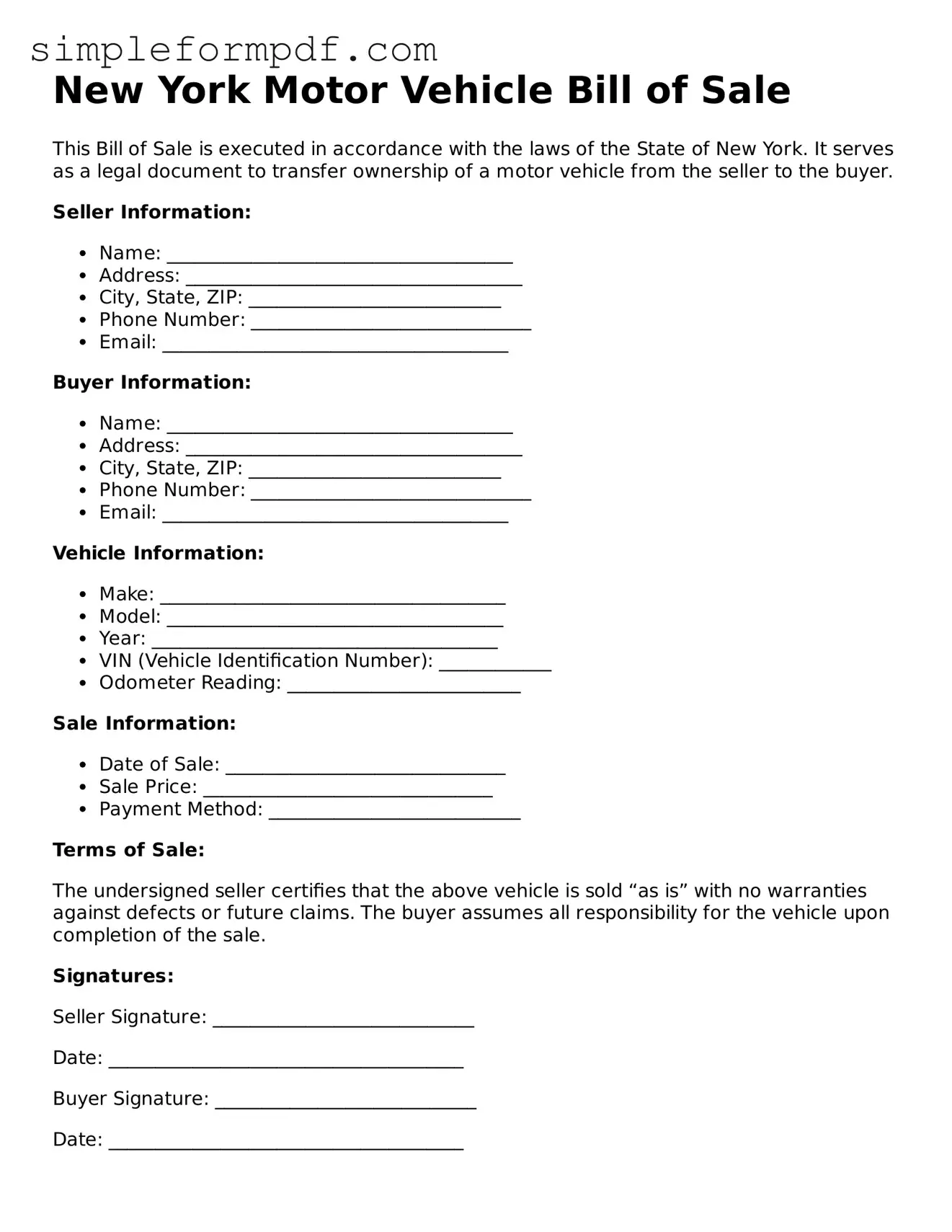New York Motor Vehicle Bill of Sale
This Bill of Sale is executed in accordance with the laws of the State of New York. It serves as a legal document to transfer ownership of a motor vehicle from the seller to the buyer.
Seller Information:
- Name: _____________________________________
- Address: ____________________________________
- City, State, ZIP: ___________________________
- Phone Number: ______________________________
- Email: _____________________________________
Buyer Information:
- Name: _____________________________________
- Address: ____________________________________
- City, State, ZIP: ___________________________
- Phone Number: ______________________________
- Email: _____________________________________
Vehicle Information:
- Make: _____________________________________
- Model: ____________________________________
- Year: _____________________________________
- VIN (Vehicle Identification Number): ____________
- Odometer Reading: _________________________
Sale Information:
- Date of Sale: ______________________________
- Sale Price: _______________________________
- Payment Method: ___________________________
Terms of Sale:
The undersigned seller certifies that the above vehicle is sold “as is” with no warranties against defects or future claims. The buyer assumes all responsibility for the vehicle upon completion of the sale.
Signatures:
Seller Signature: ____________________________
Date: ______________________________________
Buyer Signature: ____________________________
Date: ______________________________________
This document may be used to register the vehicle with the local Department of Motor Vehicles and for any other legal purposes as required by the State of New York.
